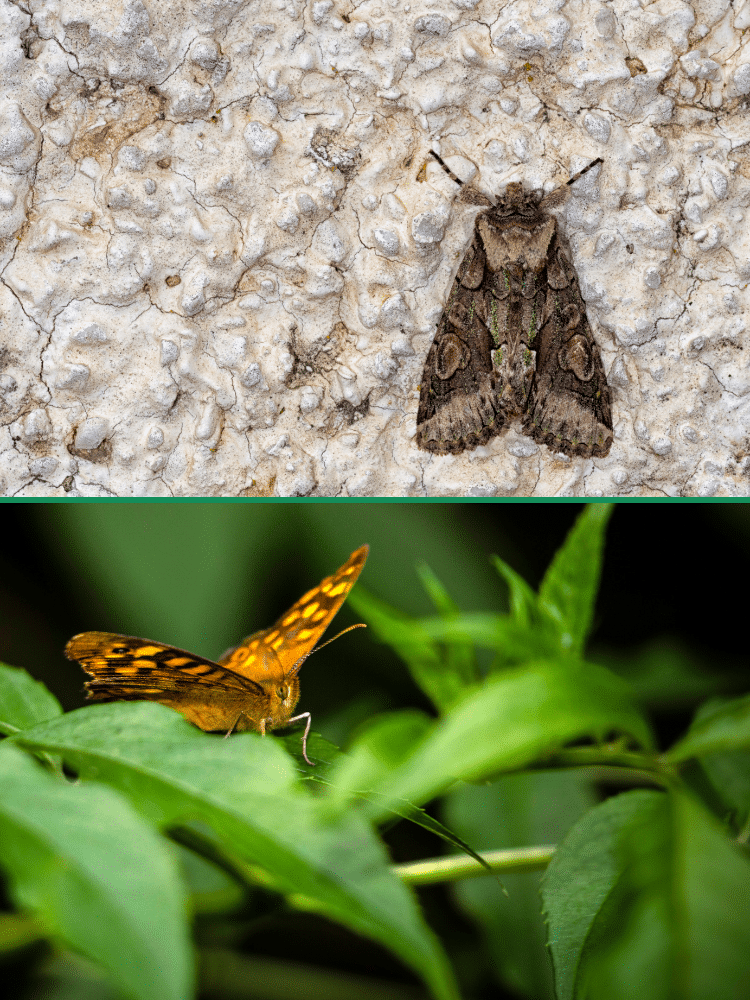When sustaining life, there is no substance more important than water. We know that humans are made of an impressive percentage of water. We also know that almost the entire planet is covered in it! So when it comes to sustaining life, water is essential.
It seems like a no-brainer when we think of animals drinking water to survive, but what about insects? Do moths drink water?
Yes, moths drink water. They are incredibly tiny, so moths do not need much water, only a few droplets. It is rare to find a moth enjoying a cool drink of pure water. Usually, moths will get water from their other food sources.
If you find moths on the side of a muddy puddle, they usually gather other nutrients from the mud, such as sodium. The males then pass these key minerals and vitamins to the female when they mate.
What Do Moths Eat?
Regarding caterpillars, we all know the story of The Very, Hungry Caterpillar, who ate through leaves, fruits, and even a chocolate cake. While caterpillars in the wild do not enjoy such a lavish feast, they eat lots of leaves!
But what about the adult that the caterpillar becomes? What do moths eat?
Adult moths have a vastly different diet than their caterpillar stage. When the moth is a caterpillar (essentially, a baby moth), it needs to gather an immense amount of food to use as energy since it will undergo metamorphosis.
Caterpillars will spend their days eating leaves and plants to store enough calories to sustain them through the change. Once they emerge from their cocoons with wings, the adult moth will fly off searching for a mate and a meal.
Moths Don’t Eat Anything
Adult moths survive on a liquid diet. They consume nectar from flowers, juice from rotting fruit, sap from trees, bird urine, animal dung, and some species even drink blood!
In most moth species, the females survive almost solely on flower nectar and fruits. Male moths tend to gather nutrients from animal dung or even blood.

They will pass the nutrients to the female when they mate, providing necessary nutrition for both the females and their eggs.
Do Moths Drink Blood?
This might sound revolting, but moths can be found drinking blood… Even the blood of humans! These moths have been given the rather obvious name of Vampire Moths. You can learn more about these blood-sucking insects here.
Do Moths Need Water to Survive?
Yes, moths need water to survive. Like almost every living thing, water is necessary for moths. However, how they obtain this life-sustaining substance differs greatly from humans or animals.
Adult moths do not have traditional mouths. Instead, they have a long, straw-like tube to slurp up liquid. This mouthpiece allows them to get deep into the female parts of the flowers and gather nectar.
A mouth’s mouth is called a proboscis. It is like a straw that can suck up plant nectar deep within flowers. Moths can retract the proboscis when they are not drinking nectar.
Most of the time, moths get enough water from other food sources. They are incredibly tiny, so they do not need a lot of water to survive.
The amount of water they get when they drink nectar from plants, juice from fruits, or even animal dung or urine, is usually enough to sustain them.
However, you may find a few moths drinking from sheltered puddles in your garden.
Many moths will not feed from open areas like puddles, lakes, or bird baths because many birds will also be there. For moths, birds are a huge concern as birds are their primary predators.
Some moths do not have mouthparts at all. These species will absorb water and nutrients through their bodies. For these species, they stored up enough nutrients and food for energy when they were in their caterpillar stage.
Summary
Like almost every other living being, moths need water to survive. However, unlike other animals that use their mouths to drink, moths do not.
Moths do not have mouths but a mouthpiece that they use like a straw to slurp up water usually mixed with delicious nectar from plants — their main food source.







